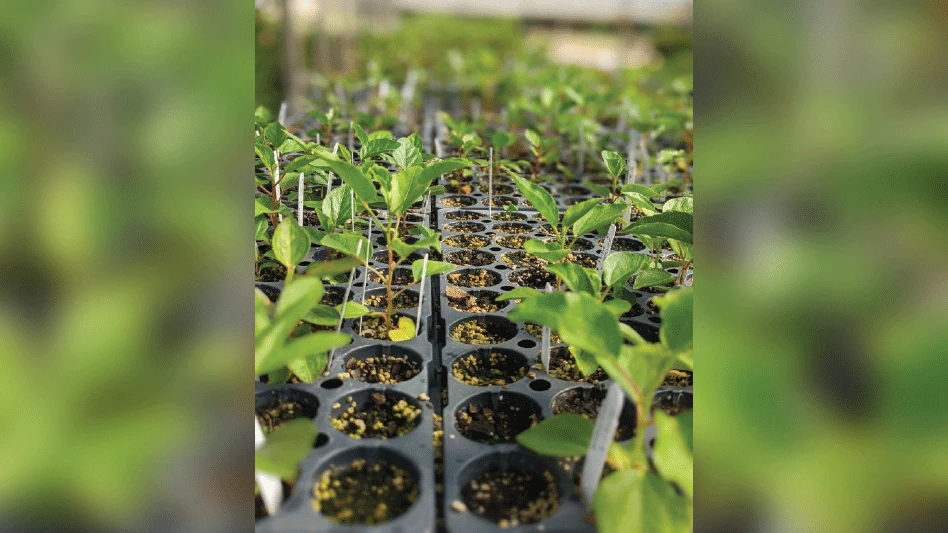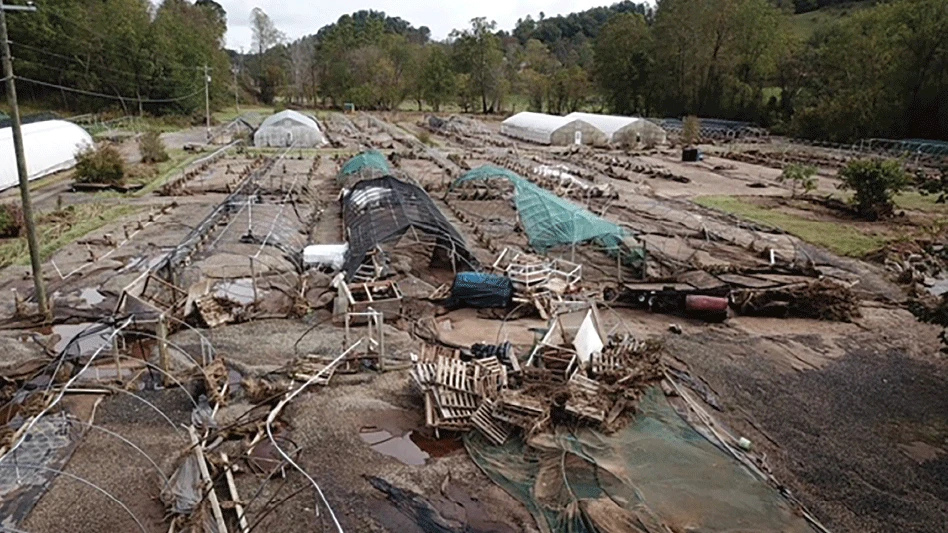
As part of Nursery Management's upcoming State of the Industry issue, we asked growers for their reflections on 2016 and predictions for 2017. First up is Nancy Buley, communications director for Boring, Ore. wholesale nursery J. Frank Schmidt & Son Co., on the topic of tree shortages. Watch for more perspectives on the industry online and in our November issue.
Nursery Management: Have you noticed any shortages in the market this year?
Nancy Buley: Yes! There’s an overall shortage of bare root and container liners in the marketplace this year. Many varieties are sold out, or are available only in small numbers and/or sizes.
We are also experiencing a continent-wide shortage of landscape-ready trees in the 1.5-3” caliper range. We know this because of a surge in requests for our TreeLocator service. Because specifiers and buyers are unable to find the trees they need from their customary vendor nurseries, they are turning to our TreeLocator service to find new potential sources of trees. We connect them with our customers in their region who have purchased liners of the cultivars and/or species they are seeking. If they are not already sold out, our customers are likely to make a sale and perhaps develop a new business relationship.
NM: What type or types of material is in short supply?
NB: Liners of large canopy shade trees are very short in the marketplace this year. We’re sold out of many species of which we grow fairly large numbers and usually have a good supply for winter sales. Most of our elms, linden, plane trees, swamp white and forest green oaks, and a variety of other large canopy oaks are sold out. We have smaller than usual numbers of named cultivars of ginkgo, black tupelo, sugar maples. Even staples like flowering pear and honeylocust are nearly sold out. We still have an assortment of oaks of various species that are desirable for meeting urban forest diversity goals, but in much lower numbers than usual.

Espresso Kentucky Coffee Tree, courtesy J. Frank Schmidt & Son Co.
NM: Have you noticed any surpluses in the market? If so, what type or types of material?
NB: Our supplies of red maples, flowering cherries and ornamental crabapples are still pretty good. While not found in surplus quantities, we still have good numbers of some of our newer introductions such as Urban Pinnacle Oak, Espresso Kentucky Coffee Tree, NCSU’s new columnar Javelin Pear and Dr. Michael Dirr’s selections; Golden Colonnade Ginkgo and Beacon Oak. All of these are improved and/or uniquely different from the species and selected for their ability to perform in tough urban settings. Because urban foresters are seeking and specifying trees to meet their species diversity goals, now is a good time to branch out and try some alternative species and new, improved cultivars rather than planting the same old varieties and commodity items.
NM: Do you anticipate any shortages or surpluses for 2017?
NB: If the economy keeps chugging along at a similar pace, shortages of today ought to continue for the next several years. Our savvy customers have already placed or rolled over their orders for 2018. Specifiers and buyers of finished stock should continue to plan ahead and reserve stock and/or contract grow in order to be assured of obtaining the trees they need for at least the next several years.
NM: What factors are contributing to the shortage?
NB: The severe shortage of finished trees is caused by a number of factors that have combined to cause a “perfect storm” of tree shortages that won’t blow over for a number of years:
• Nurseries reduced their planting of liners by the millions during the recession. It's the trees that should have been planted in those years that should be in the marketplace now.
• A large number of nurseries went out of business, and others returned their nursery acreages to the production of other crops.
• Labor shortages prevent many growers from increasing their plantings, and limit our planting of additional liners, too. We cannot plant more trees than we have labor to care for them properly.
• Today’s improved economy has sparked housing construction and commercial development that calls for trees.
• The onslaught of emerald ash borer (and the resulting rapid loss of millions of city trees) drives a huge demand for large-canopy shade trees to replace them.
• Tools for quantifying the value of urban forests (such as the U. S. Forest Service I-Tree software suite) are coming into general use. These generate a greater appreciation of the value of trees as green infrastructure. The reports also enable urban forest managers to accurately calculate the percentages of Genus and species that populate their city forests, and highlight the importance of diversifying their planting mixes.
• Municipalities around the world are recognizing that a healthy urban forest is essential to creating healthy, livable cities. Tree advocates now have the numbers to prove the economic, social and health benefits of trees, and are demanding capital investment in green infrastructure, which increases overall demand for trees and contributes to market shortages.
Photo (L-R): Javelin Pear, Emerald City Tulip Tree, Armstrong Gold Maple. Courtesy J. Frank Schmidt & Son Co.
Get curated news on YOUR industry.
Enter your email to receive our newsletters.Latest from Nursery Management
- November issue recap
- Trump threatens 25% tariffs on Mexico and Canada in move that could hurt horticulture
- Hold the line!
- Meet the All-America Selections AAS winners for 2025
- Exacto announces David Hollinrake as CEO
- AmericanHort accepting applications for HortScholars program at Cultivate'25
- BioWorks hires Curt Granger as business development manager for specialty agriculture
- 2025 Farwest Show booth applications now open







